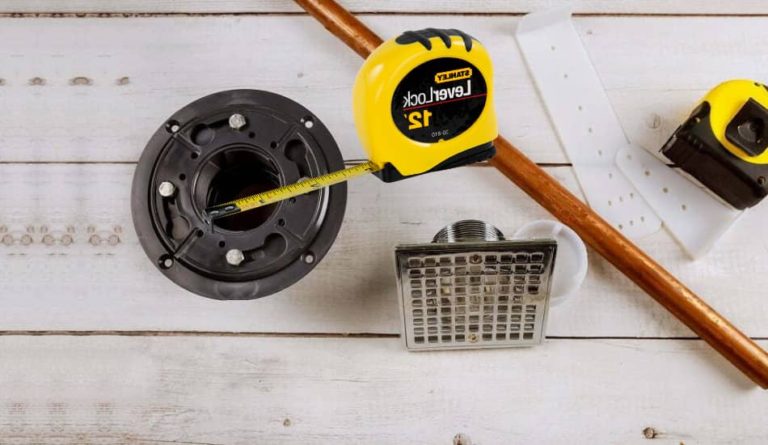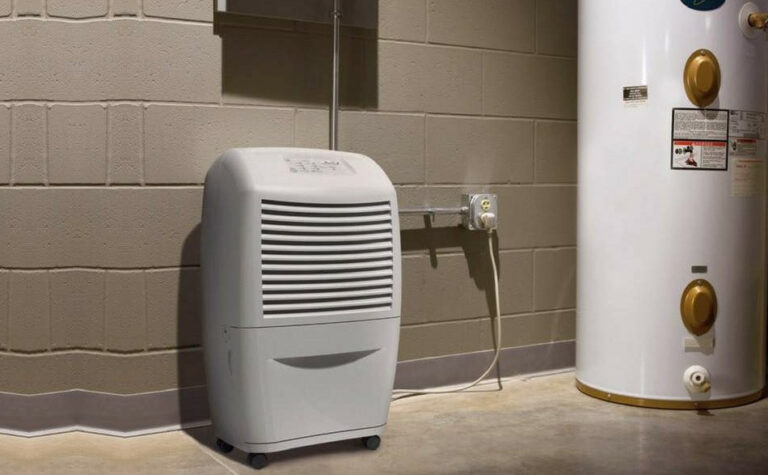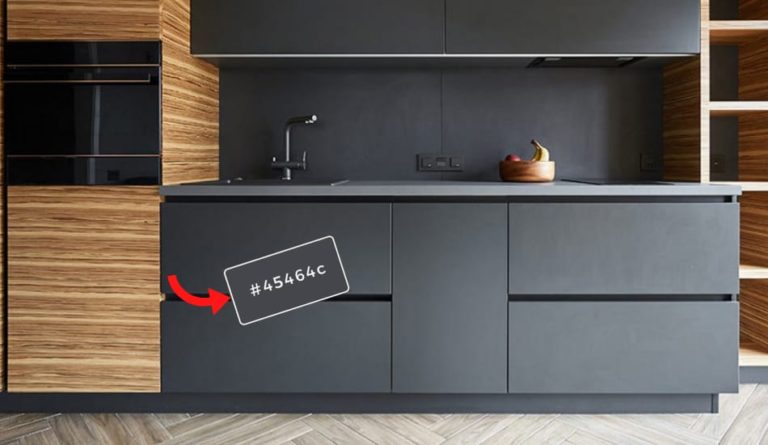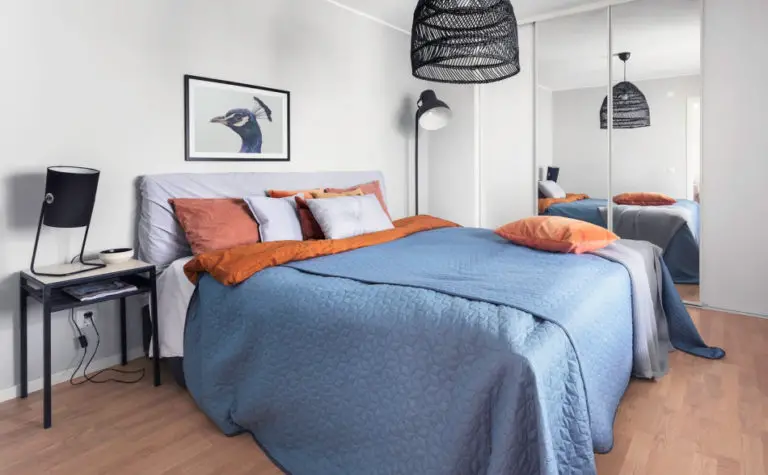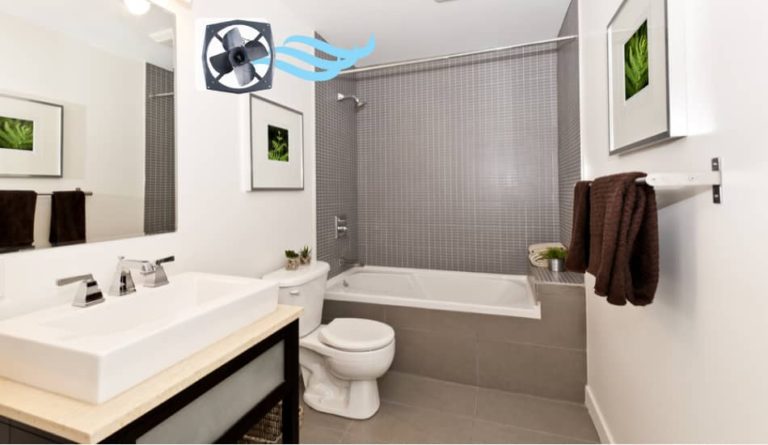Washer and Dryer Dimensions Explained (3 Diagrams)

A modern home today is unthinkable without a dryer and a washer. The ideal situation is if you have enough space in your home for a laundry room, but the stackable dryer and washer system is the right solution for you if you don’t have one.
Keep in mind that stackable dryers and washers have different measures than classic dryers and washers. All dryer and washer manufacturers usually tell you the devices’ depth, height, and width on their products. But when trying to determine exactly where to place a dryer and washer in your home, you need to keep in mind that these devices also need extra space. To use the space you have designated for the dryer and washer efficiently and wisely, it is important to know the standard dimensions of these home appliances before purchasing.
Table of Contents
What Are Standard Washer and Dryer Dimensions?
Today, almost every home comes with a dryer and washer. You are really lucky if you have enough space in the home for a completely separate laundry room. If you have, you don’t have to worry about how much space these devices take up. But if you don’t have enough space in your home, you should consider buying a stackable dryer and washer.
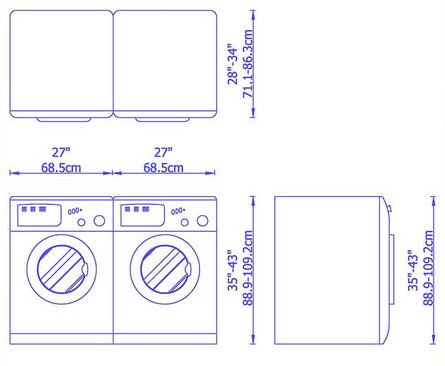
The width of the average dryer and washer is 27 inches or a total of 54 inches. If you are going to place these devices next to each other, you should leave one inch of space between them, so you need a total space of 57 inches.
When buying these devices, you should also think about the height of the dryer and washer. It ranges on average from 35 to 43 inches. When it comes to the depth of the device, the standard dimension is from 28 to 34 inches. Also, be sure to leave an additional 6 inches of space in front of the device.
| Front-Load Washer And Dryer | Compact | Full-Size | Mega-Capacity |
|---|---|---|---|
| Width | 24 inches | 27 inches | 28-30 inches |
| Height | 34 inches | 39 inches | 40-42 inches |
| Depth (When doors are closed) | 24 inches | 32-34 inches | 32-34 inches |
| Depth (When doors are open) | 42-44 inches | 54-57 inches | 55-56 inches |
For those who are thinking of buying a new washing machine, be sure to read Samsung Washer VRT – Is it Worth Buying?
Front-Loading Washer and Dryer Dimensions
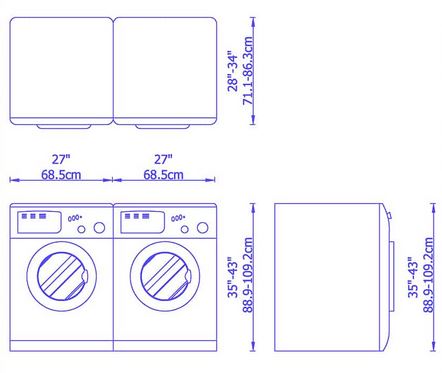
As the name implies, the front-loading washer and dryer come with a door for loading and off-loading laundry. Front-loading washers can be purchased in standard sizes and they are also available in a stackable form. If you decide to buy a washer with a front-loading option, you should keep in mind that you must leave at least 24 inches of space in front of the device for easier door opening and its use in general.
Stackable Washer And Dryer Dimensions
Stackable washers and dryers are a very popular solution, especially among people who live in smaller apartments or condos. The reason is simple – they take up much less space than separate devices. Stackable dryer and washer function as a whole. In that form, they are available on the market, which, in addition to saving space, also saves money.
Two options are available when it comes to stackable washers and dryers: single units and freestanding. Although a combination that includes a front-loading dryer and a top-loading washer can be found on offer, in most cases, stackable dryer and washer are sold with a front-loading for both devices. Dimensions of stackable dryer and washer depend on the brand of product, but their usual depth is 30 to 34 inches, height 77 to 80 inches, and they are 27 inches wide.
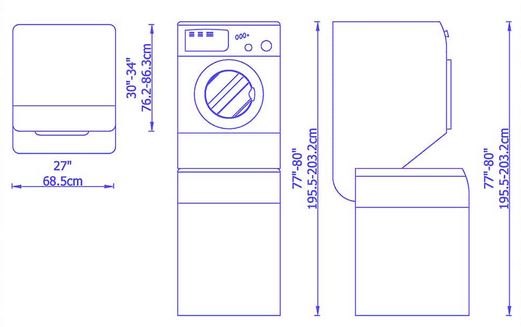
The free-standing devices are usually purchased separately from each other and then stacked on top of each other when installed to save space. Their measurements do not differ from the measurements of standard devices. When buying a stackable dryer and washer, keep in mind that these devices vibrate much more during operation when they are on top of each other. It is therefore recommended to place the dryer on top of the washer.
Otherwise, you can put each free-standing device on top of each other, you just need to check the device’s dimensions first. If after the check it turns out that the washer has larger dimensions than the dryer or vice versa, a larger device should be placed on the bottom. In any case, such on-site deployment during installation is only possible if both devices are front-loading, which is usually the case. If it happens that, for example, the washer is bigger than the dryer, and there is a top charge on the washer, installation is not possible.
Measuring Guide For Washer and Dryer
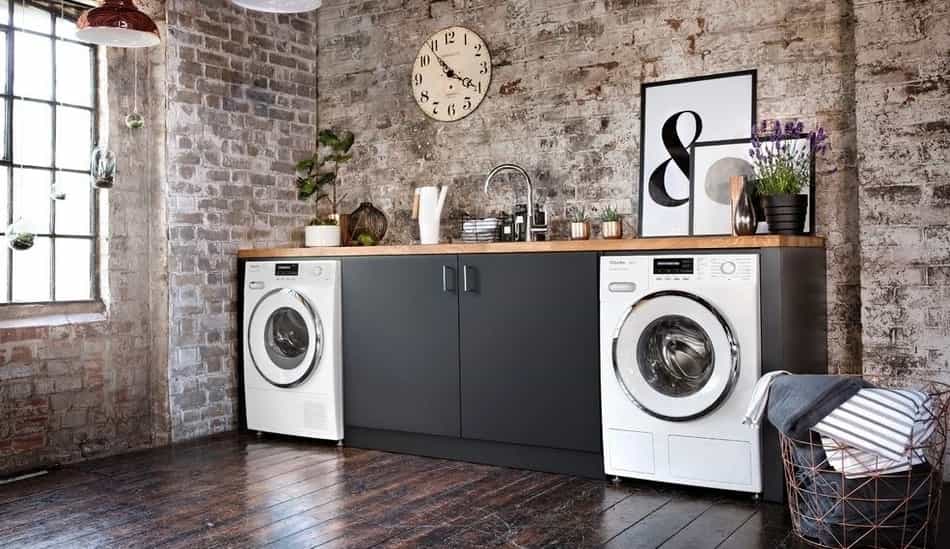
To calculate exactly how much space you need for the precise installation of these devices, we’ll explain to you the measurement guide. There are several ways you can install a dryer and washer: one on top of the other (front-loading) or next to each other, whether it’s top-loading or front-loading. You can also add a stand when installing under the device. Note that stackable devices are a great idea when you don’t have a lot of space available, but they require careful space measurement before buying.
You need to measure carefully the depth, width, and height of the space in which you plan to place the dryer and washer, and take into account that in addition to the space for the devices themselves, you also need extra space for use. There are no standard dimensions of the dryer and washer, so it is important to measure the space very accurately.
In order to install your devices as planned, you must leave some space in front, behind, and on the side. You should leave 6 inches for the hose, 4 feet for a comfortable filling, 1 inch on each side, and enough space for safe use of the door. When it comes to measuring height, you just need to add up the height of both devices. When you do this you will get a clear picture of how you will be able to handle the upper device.
Things To Pay Attention When Choosing Washer and Dryer
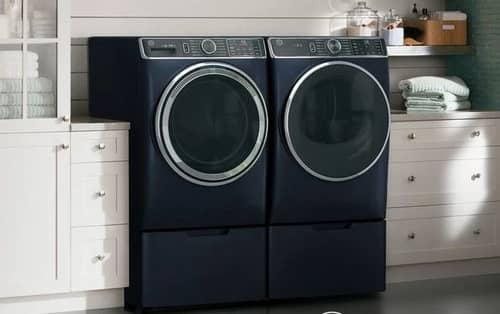
If you can’t decide which dryer and washer would be ideal for your kitchen or laundry, below is an overview of what you should pay attention to:
- When the laundry is not wide enough, the best choice is stacked dryer and washer. The total height of both devices is approximately 75 inches.
- If you have very little space for dryer and washer, you should choose compact dryer and washer that are suitable for tight spaces. When buying such devices, you should check the dimensions and circumference of the drum. It is an unwritten rule that when it comes to dryer one should take the largest possible drum size in relation to the size of the washer drum. If you don’t do that, you may find yourself in a situation where you need two drying cycles for one round of laundry.
- Before installation, check how much space will remain in front of the device after it is installed.
- We have already mentioned that some free space should be left around the device. This space is called clearing space and has several functions. One is to ensure airflow around the device for safety reasons. It also reduces vibration and noise because if the devices are too close to each other or to the walls, during operation they bang on a hard surface which is very loud and damages the devices. Therefore, always ensure a sufficient distance between the devices and the devices in relation to the walls or furniture.
- The approximate height of the stackable dryer and washer is 6.5 feet / 78 inches, while the approximate height of the standard ceiling is 8 feet / 96 inches. It is clear that this ratio leaves you enough space for vertical stacking of devices in most rooms. The opposite can only be the case if you place the devices in dormer rooms.
- Dryer and washer can also be installed in closets. It should be borne in mind that it is important to leave enough space to open and close the closet door.
- The best solution in this case are cabinets with sliding doors or doors that open forward. It is important to measure the distance between the wall and the back of the cabinet before buying. Do not make mistakes when determining the depth of the dryer and washer!
- Dryer and washer combinations with front loading take up far less space in length than is the case with stacked units. Many devices of this type are only about 33 inches high. But to this measure should be added 1 inch on the sides, 5 to 10 inches on the back and 6 inches in height. By remembering this instruction you will surely be able to choose the ideal dryer and washer for your home.
Stackable Units Vs. Combo Units
Now that you’ve found out how much space you’ll need for your dryer and washer, we’ll consider the pros and cons when it comes to combo and stackable dryer and washer.
Stackable dryers and washer
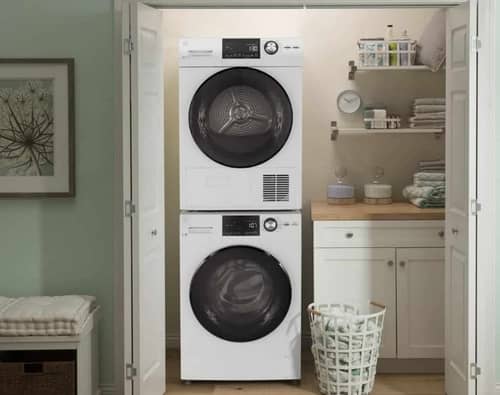
Pros:
- Do not require a lot of space, can fit in the closet
- Appliances can be placed next to each other or on top of each other
- When one device breaks down it is not a problem to replace it
- You can choose a model that runs on gas or electricity
- Great choice for small homes
Cons:
- Can be filled with laundry only from the front
- Additional equipment is required to install the device
- Installation and repair require strong man power
- Devices cost more money
Washer Dryer Combos
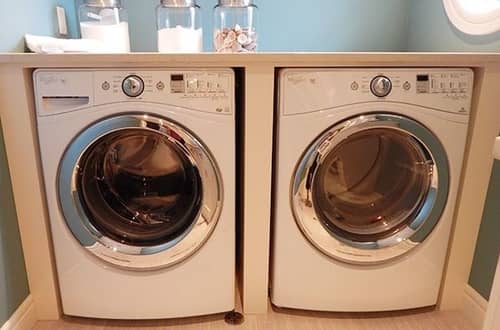
For homes where there is no laundry or closet where appliances can be installed, dryer-washer combos are the best choice. Their size is equal to the size of a washing machine, so when it comes to height, they can be installed in an extremely cramped space.
Pros:
- They save space
- They can be hidden in a smaller enclosed space
- It is a 2in1 system, you install only one device
Cons:
- All available models run on electricity
- Their energy efficiency is much lower compared to separate devices
- When the dryer or washer function stops working, the whole device fails
- Their price may be higher compared to stackable devices
General Tips When It Comes Washers and Dryers
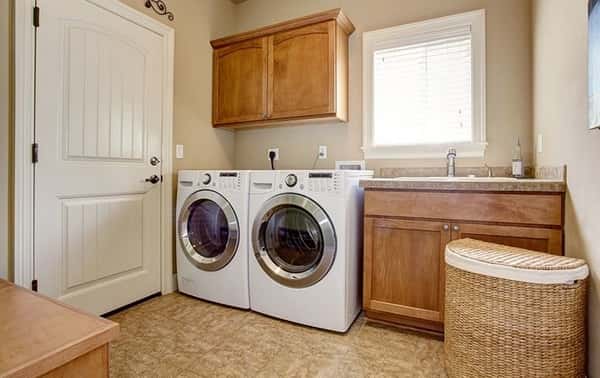
Here are five basic tips to keep in mind when it comes to measuring dryers and washers. Although the devices differ in their dimensions depending on who the manufacturer is, these tips should be considered when it comes to most dryers and washers.
1. Make space for venting
- Standard size vents have a diameter of 4 inches and are no longer than 25 feet. This means that they need another 4 inches from the back, which will increase the depth by 4 inches.
2. Beware tight fits
- This is especially important to keep in mind when dryer and washer are installed in the closet
- Tight fits make it difficult to install, maintain and repair the device
3. Keep an eye on clearance
- Dryer and washer models may differ in the way they open doors: up, down, out or swing open
- Always consider together ‘how door opens’ with depth and height measurements
4. Inspect for backside obstructions
- Gas-powered dryer has a gas pipe which is a common cause of device installation jams
- Water pipes can also cause installation problems, especially in cases where cold and hot water valves are not located in the intended location
5. Consider alternatives
- A professional help can convert the vent to a different position if required by the installation
- Dryer and washer with front filling can be stacked on top of each other with simple installation accessories
- When installing dryer and washer in a very confined space ventless devices should also be considered for which you need 6 inches less space at the back
For those who want to know more, be sure to read How To Plumb-in A Washing Machine: 8 Things You Need To Do.
Final Thoughts
Whether you are buying a dryer and washer combo or a stackable dryer and washer you first need to provide enough space in your laundry or kitchen. Before buying, you need to measure the height, width, and depth of the space in which you plan to place these devices.
Be sure to leave enough space for the appliance door to open comfortably and safely. You need at least 4 feet of space in front of the appliance to charge and empty the dryer and washer. When you decide how much space you need to install the device, you can go shopping for a dryer and washer and choose the model you like! I hope that this article has helped you.


